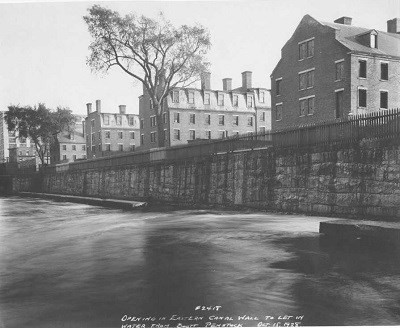Lowell Mills Girls: Boarding Houses
Introduction
Text-to-speech Audio
Images
View of Boott Boarding Houses

Backstory and Context
Text-to-speech Audio
The boarding houses where the Lowell Mills girls lived during the hours they were not at work were strictly maintained by older women, typically widows, who lived in the houses with their own children for terms for four, eight, or twelve years. Their role was described parental by Henry Thomas, who cataloged the living and working conditions in Lowell after concerns were raised about sickness and death among the workers. His account "Lowell, As It Is and Was" was collected mainly from the factory corporations, supervisors, and matrons directly. Therefore, the catalog differs from first hand accounts written by factory girls in publications like "The Lowell Offering."
Women would often join boarding houses with others from her town in New England and then find work in a factory along with her peers. This made for a very communal recruitment and hiring process, further forging a tight knit, if homogenous, community.
There were strict moral codes and social norms in the boarding houses that maintained an orderly living environment. Workers were required to abstain from alcohol at all times. Some of the rules included proper time and attendance, mandatory boarding in company housing, constant church attendance, no stealing textiles, and strict curfews and meal times were enforced. Doors locked at 10, meals can be taken from30-45 minutes depending on the time of year.
Socially, the girls spent all their leisure time together as well. Issues of the “Lowell Offering” give some insight into how their time was spent as well as how peers enforced their moral policies. With any suspicion of immorality, the rest of the girls would shun a worker both in the factory and socially in the boarding houses. This kind of peer pressure may have been helpful in community organizing for the girls in order to walk out. The close living and working quarters and need to conform to the community helped created an environment where such organization was possible.
Sources
Miles, Henry. Sabin Americana 1500-1926. Powers and Bagley [Etc.], 1845.
Dublin, Thomas. “Women, Work, and Protest in the Early Lowell Mills: ‘The Oppressing Hand
of Avarice Would Enslave US.’” Labor History, vol. 16, no. 1, 1975, pp. 99–116.
https://www.nps.gov/lowe/learn/historyculture/mill-girls-and-immigrants-exhibit.htm
